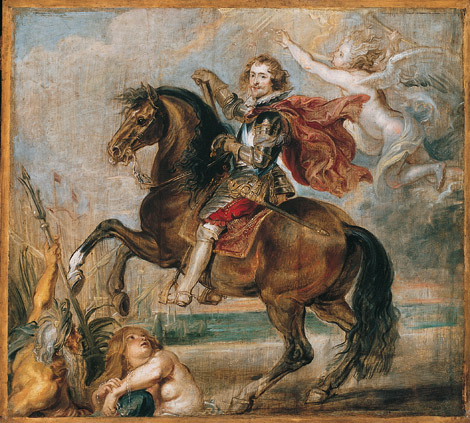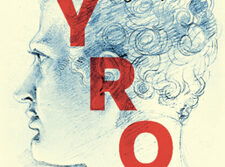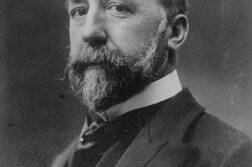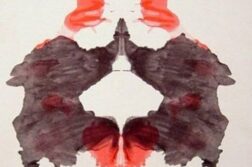FROM 1615 TO 1625, George Villiers, 1st Duke of Buckingham was the favorite and “sweet wife” of King James I. Villiers parlayed his homosexuality—not to mention his other talents, including a standout gift for horsemanship—into vast wealth and political power. An accomplished rider himself, he was involved in a number of colorful incidents, notably a struggle for ownership of a famous breed of racehorse, the Sheffield Barb.
In 1604, after Queen Elizabeth I died without an heir, Scotland’s King James VI was invited to be King James I of England. When James Stuart arrived in London he discovered that the English aristocracy had gone horse-crazy. Horses had been a status symbol since medieval times, but King James pushed things to a new level. He adored hunting and racing, and patronized these sports at every opportunity. When he moved to improve the clunky, placid English horses by crossing them with the faster, more fashionable, fiery breeds of imported “eastern” horses, his nobles had to jump on the trend along with him.
These imports captured the national imagination with their speed, toughness, and refinement. Their leg bones were stronger, more iron-like than those of English horses, so they stood up better at top speed. Notable was the Barbary or Barb horse, a distinguished ancient breed developed in North Africa by the Berber tribe of Morocco and taken to Spain and Portugal by Islamic invaders in the 8th century. From there the breed was discovered by European aristocracy, who were stunned by its proud carriage, beauty, and usefulness. Pure Barbs were bred at a few noble stud farms in Spain and Italy.
“Horsemanship became synonymous with the art of politics and imperial rule,” observes historian Donna Landry of the period. “Horse ownership, and horse-related engineering in England … increased dramatically during the 17th century.” That horse-related engineering would include the beginnings of genetic science in animal husbandry, as well as the first glimmers of modern training and veterinary medicine.
Villiers’ grab for the Sheffield Barb took place in a hotbed of politically ambitious families. They ranged from nobility to untitled gentry, and not all were ardent royalists. Some were fierce Parliamentarians, as the epic struggle was shaping up

between the Crown and Parliament for control of the government. But in 1609, Villiers was just a smart, good-looking bumpkin with a mop of curls who had grown up in the village of Brokesby, Leicestershire. He could ride well but had few prospects. His father, Sir George Villiers, was a threadbare, hard-working country squire and sheep farmer. He was also a local sheriff whose knighthood came with no title.
It was George’s ambitious mother, Mary Beaumont, who had a plan to escape the sheep farm. Since her own family once included titled descendants of the Plantagenets, she had a few social connections and scratched together enough pence to send George and a guardian to Europe, hoping he might finagle invitations from noble families there. France, especially, was the finishing school for rough-cut young Englishmen desiring to make it at court but needing a crash course in manners, conversation, politics, culture, and horsemanship. Mary evidently knew about her son’s homosexual bent, as well as that of King James (who openly maintained a relationship with his favorite, Robert Carr) and had a plan to get the family back up the social ladder by getting George into the King’s bed.
That same year, 22-year-old Sir John Sheffield and two other distinguished young ”finishing schoolers” were being splendidly entertained by the Duke of Guise in Marseilles, France, and planned to go on a shopping spree in the horse market there. All three boys had powerful, titled fathers who were advisors to the King. It was considered chic to return from one’s Continental travels with an exotic racehorse, and the French had discovered the imports from Barbary. However, the best were expensive, and his father might be picking up the tab; so John must have been nervous about choosing the right horse. While hobnobbing around France, the titled trio may actually have run into George Villiers, then seventeen. Or they may have heard juicy rumors about George’s attraction to men. They may have turned up their noses and dismissed George as the latest hopeful hick.
Sir John was the second son of Edmund Sheffield, 3rd Baron of Sheffield in Yorkshire. A naval commander who fought the Spanish Armada in Queen Elizabeth’s time, Lord Sheffield headed a proud dynasty of prominent politicians. Unfortunately, Elizabeth’s reign had left the country broke, and many titled families, including the Sheffields, were in debt. His large brood of thirteen children—and his love of expensive horses—apparently added to his troubles. Two years before, he and Lord Haddington had matched their horses in one of the most exciting sporting events in years, and Sheffield had won. So the old man may have said to John, “While you’re over there, son, get us a good new horse.”
Sir John was already married to a girl from local gentry. Since he was not Lord Sheffield’s oldest son (which meant he wouldn’t inherit the title), his best career option was to make a splash at court and hope to win a title of his own. With England so broke, James I was raising quick cash by selling titles to wannabes.
The other two horse-shoppers were brothers-in-law. William Cecil, Viscount Cranborne, was barely eighteen. His father was Robert Cecil, Earl of Salisbury, who had orchestrated the succession of James Stuart. The Earl served in the king’s Privy Council. The previous year, he had married son William off to a daughter of Thomas Howard, Earl of Suffolk. Right after the marriage, he had heartlessly shipped William to France and told him to stay there for two years. William’s brother-in-law was Sir Thomas Howard, 22, son of the Earl of Suffolk. Suffolk also served in the King’s Privy Council. Both of these families had been in hot water with the royals under Elizabeth I, so they were trying hard to keep the King’s good will.
Now Lord Salisbury suddenly sent word to France that he wanted William to come home early. In mid-1610, James was having his son installed as Prince of Wales. Salisbury had wangled for his son the enviable task of holding the King’s train during the ceremony. It would be nice if the boys could come home with shiny new stallions for the festivities.
In late fall of 1609, Sheffield, Howard, and Cranborne hand-picked their horses, possibly with expert advice from their host the Duke and their guardians or mentors. Howard splurged and bought two. The magnificent young stallions were probably four or five years old. A trading company had brought them into Marseilles, so they may have been bred in Italy or imported directly from Morocco. Following English custom, the four stallions were mentioned by their owners’ surnames—the Cranborne Barb, two Howard Barbs, and the Sheffield Barb. From Marseilles they were taken to Paris, and arrangements were made for shipping them on to London.
As it turned out, Sir John made the most brilliant pick. On December 1, an observer wrote a letter declaring that Sir John’s horse was “beather then eny of the other; but as I heare he payed well for hime, for it cost Sir Jhan Shefilld, before he had hime braught to Paris, on hundred and fortie pound.” At that time, 140 pounds sterling was a small fortune (England’s monetary system operated on a silver standard). Sir John’s father got a pension of £1000 a year. A minor noble might earn £1500 a year from estates—tenant rentals, sale of crops, and so on, so £140 was a tidy sum for a horse. Most likely Lord Sheffield paid for the horse, taking a loan and thus adding to his debt. Indeed, that same year, according to records in the British National Archives, the king’s Treasurer, Lord Salisbury, was frowning over Lord Sheffield’s mounting woes, threatening to withhold his pension against a debt he owed the King.
Intrigue Over a Horse
Fast forward to 1614, a key year in the story. By then, George Villiers had also come home from France. Now 22, he was handsomer and a better rider than ever, with a spirited wit and charismatic personality that matched his will to succeed. His mother and her allies had launched an intricate series of social maneuvers designed to get her son introduced to the King.
At last, one day in August 1614, King James visited the country estate of a friend after a day’s hunting. George Villiers just “happened” to be there. The King was smitten. Robert Carr had become cranky and demanding of late, but here was this wonderful young man with chestnut curls and dark-blue eyes, who had perfect manners but none of the hollow sophistication of so many courtiers. He was full of laughter and energy—and looked even better on a good horse. Immediately James invited George to court. Soon the hick from Brokesby was appointed royal cupbearer. By 1615, Robert Carr was history.
Meanwhile, young Thomas Howard had moved up the ladder to become a member of Parliament and Master of the Horse for the Prince of Wales. That same year, he married a niece of William Cecil’s father. As for William, his formidable father had died in 1612. He was now the 2nd Earl of Salisbury and served the King as Lord Lieutenant of Hertfordshire.
Sir John’s advancement was less glowing. By 1614, at age 27, his main achievement was fathering five children. He was a shadowy presence in Parliament—no speeches by him are on record. Most likely, he kept the solid-gold stallion at court, handy for the spontaneous racing and hunting expeditions into the countryside that King James was fond of launching.
On December 3,1614, tragedy struck. Back home in Yorkshire for the approaching holidays, Sir John and two of his brothers drowned in a ferry accident while crossing the river near the Sheffield family seat at Normanby. Their bodies were never found. Lord Sheffield and his family staggered under this loss. John’s widow and children may have found themselves in their own financial bind. No doubt Lord Sheffield felt obliged to help them out somehow.
Onwards to 1616: George Villiers, now 24, was well on his way. His strategy with the King was simple: keep James happy, and do whatever the King wanted. However, he had a way of making sure that James wanted what he wanted. According to British historian John Lord Campbell in his Lives of the Lord Chancellors, George was “ostensibly the King’s servant, but really ruled the King and the Kingdom.” The king also gave George his first land grant, located in royal hunting lands at Whaddon, Buckinghamshire, and valued at £80,000. His shiny new titles were Baron Haddon and Viscount Villiers, and his mother was now a Countess. His knowledge of horses had gotten him appointed as the king’s Master of the Horse, which made him responsible for everything equine for the crown, whether it was cavalry, transportation, or sport. He busied himself importing expensive horses for his royal lover and kept a few for himself. Some of the horses he sent to Whaddon; others he stabled at court.
Horse racing was still somewhat informal, with annual runs for gold cups in a few cities and matches between rival bluebloods on a pick-up basis. But James was working to organize the sport. In 1604, the year he arrived in England, he had discovered the open grassy heath north of London, where you could gallop horses over miles and miles, and recognized its potential as a national center for the sport. So he built a new hunting lodge there, followed by a palace and stables at Newmarket where he and his courtiers could be comfortable coursing their greyhounds and dueling with their horses across the turf at breakneck speed. Since lawnmowers didn’t yet exist, sheep were used to keep the racecourses trimmed.
Now and then, the king got to enjoy watching his favorite in action at Newmarket. It was still customary for gentlemen to jockey their own “running horses.” When Villiers ordered one of his best Barbary coursers to be saddled for a race, it was royalty against Parliamentarians, north against south, Anglican against Protestant—and (in his case) the gilded gay man against all those gilded heterosexuals in the peerage who didn’t like him. Indeed, the pressure to uphold the crown’s honor must have been daunting. But Villiers had an edge. In 1616, with a gay king in power, and a gay-friendly system of patronage going all the way down the line to social-climbing gentry, George could canter his grey horse onto the racecourse without any apologies to anybody.
In the Howard Barb camp, Thomas Howard’s father, the great Earl of Suffolk, had made a big mistake. He cultivated another handsome gay guy as a rival to George, hoping to capture the King for his own purposes. But George was already a grand master of cutthroat politics, so he engineered the fall of Suffolk and his entire faction. In 1616 Suffolk was shocked to find himself convicted of embezzling royal funds and hit with huge fines. Aghast, the Earl had to write pleading letters to George, asking for his help in disposing of family properties so he could pay the fines. The fact was, if you needed a favor or a little mercy from the King, even the most homophobic Protestants among King James’ nobles had to swallow their pride and go to the King’s boyfriend. Villiers could be generous when he’d won, so he did what the Earl asked.
The Three Mares
By 1620, the King had put George Villiers on his Privy Council. The other Council members were indignant, but James put them in their place. “Christ had his John,” he told them, “and I have my George.” George had been promoted to Marquis of Buckingham and was rapidly becoming the most propertied and wealthy man in England—the King had given him control of dispensing royal monopolies on trade. His income was now nearly £20,000 a year. That year he married Katherine Manners, daughter of Francis Manners, Earl of Rutland. The marriage gave him control of the Manners’ famed stud farm, Helmsley, in Yorkshire, so he may have sent some of his racehorses there.
That same year, in May, a new mention of the “Barbery Sheffeeld” went on record. The stallion was standing at stud in the royal stables at Hampton Court, under the thumb of Master of the Horse George Villiers. The palace complex of Hampton Court stretched along the Thames southwest of London, and included a grandiose stabling and breeding establishment so the royal horses could be displayed in the appropriately gilded style.
By 1620, the Barb might have been twelve or thirteen years old—an age considered by the English as prime for both a breeding stallion and running horse. That year George was busy breeding to improve the King’s sport horses, and his own. He had already imported some fine Barb mares from Spain and Italy, and kept some of them at Hampton Court. Out of all the stallions there (including the famous Markham Arabian, that he’d bought to please the King), George must have thought highly of the Sheffield Barb. In his important work Royal Studs of the Sixteenth and Seventeenth Centuries (1935), historian C. M. Prior quotes from a list that a retainer of George’s sent him, of mares who were bred that spring at Hampton Court and Whaddon. Three of them—one “Spanysh” and two “barbery”—got the big leap by the “Barbary Sheffeeld.”
How did the Barb get to the King’s stables, and why? Following his sons’ deaths, Lord Sheffield’s financial nightmare had gotten worse. So in 1618 he’d written a couple of desperate letters to George Villiers. He asked George to help him marry Lady Craven, a rich widow. He pleaded his long service to the crown, and the fact that the crown hadn’t always paid his pension. Now he needed the King’s blessing for the match. Whatever Villiers did to help Lord Sheffield, it’s likely that he negotiated transfer of the famous Barb to the royal stables as a pay-down on the old debt. This may have been done quietly out of respect for the old veteran’s record—society could have the impression that Sheffield was merely loaning the animal for His Majesty’s use. It might explain why this horse continued to wear the Sheffield surname.
A Horse Race for the Record Books
In 1622, the Cranborne Barb’s camp had a deadly political brush with Villiers. On March 18, at the Newmarket course, George went into an extra-hot match race with William Cecil, now 2nd Earl of Salisbury. It was the first horserace in English history whose results were officially recorded.
Things were going badly for England at the time, and on race day Villiers would know he was being blamed for it. James and George had jumped into the Thirty Years War on the Continent, and the cost was draining the country. Many Protestants were disputing the King’s support for sports and gambling, which they saw as immoral. Protestants and Anglicans alike deplored the crown’s efforts to marry Prince Charles into the Spanish (thus Catholic) royal family. James’ relationship with Villiers was more controversial than ever. And two months before, in an effort to manage the uproar, James had dissolved Parliament.
Why was it William Cecil who faced George that day? As a royal appointee, he was technically not James’ enemy. But it was whispered that William Cecil favored greater limits on royal power. As the two men rode onto the course, the tensions in the crowd must have been fierce. Each man had put up a wager of fifty pounds sterling—pocket change, when you consider what was at stake. The race was run in several heats of a few miles each—a grueling test for a horse. Buckingham won and took the £100. The royalist cheers must have been heard for miles.
By 1625, George Villiers had reached his pinnacle, the most admired—and the most hated—man in the realm. He was now, at 33, the Duke of Buckingham. But shadows were closing in: King James was failing and doddering; the Duke, along with a handful of trusted allies, carried on the burden of state. In February of that year, while in France to arrange the Prince of Wales’ next try at marriage, Villiers met the great painter Peter Paul Rubens and commissioned an equestrian portrait of himself. Before returning to England, Villiers sat for some sketches. The painting (which Rubens didn’t finish until 1625) cast Villiers as a great leader sitting calmly on a rearing war-horse. For two millennia Roman emperors and Christian kings had exploited this imperial horseback pose in their public arts. Now the pose was boldly captured by an openly gay man who not only ruled England but moved Europe’s politics as well. But if his body language looks assured in this work, his expression seems sad and battle-weary.
A month later, on March 25, King James died. George Villiers mourned quietly. But he had already been careful to build trust and friendship with Prince Charles, so he transitioned smoothly to prime minister for the new king. George himself had three more years to live. In 1628, he was stabbed to death by an assassin in Plymouth. Those who hated him danced in the streets and lit bonfires. Lingering outrage about Buckingham’s influence was one factor leading to the English Civil Wars of the 1840’s, in which Charles I would be dethroned and beheaded by anti-royalist Parliamentarians in 1649. (Villiers’ royalist son, the 2nd Duke of Buckingham, went into exile.)
His wife and two children had survived George Villiers’ untimely demise. So, possibly, did the genes of the Sheffield Barb. Racing historians surmise that progeny of this noted stallion may have figured among George Villiers’ famed Helmsley horses. Their breeding was carried on by the 2nd Duke after he returned from exile when the English monarchy was restored. The Helmsley horses were among the founders of today’s Thoroughbred racehorse.
Patricia Nell Warren, author of The Front Runner and other bestselling novels, has written a series of essays on LGBT sports history (see Outsports.com), collected in The Lavender Locker Room: 3000 Years of Great Athletes Whose Sexual Orientation Was Different (2007).





